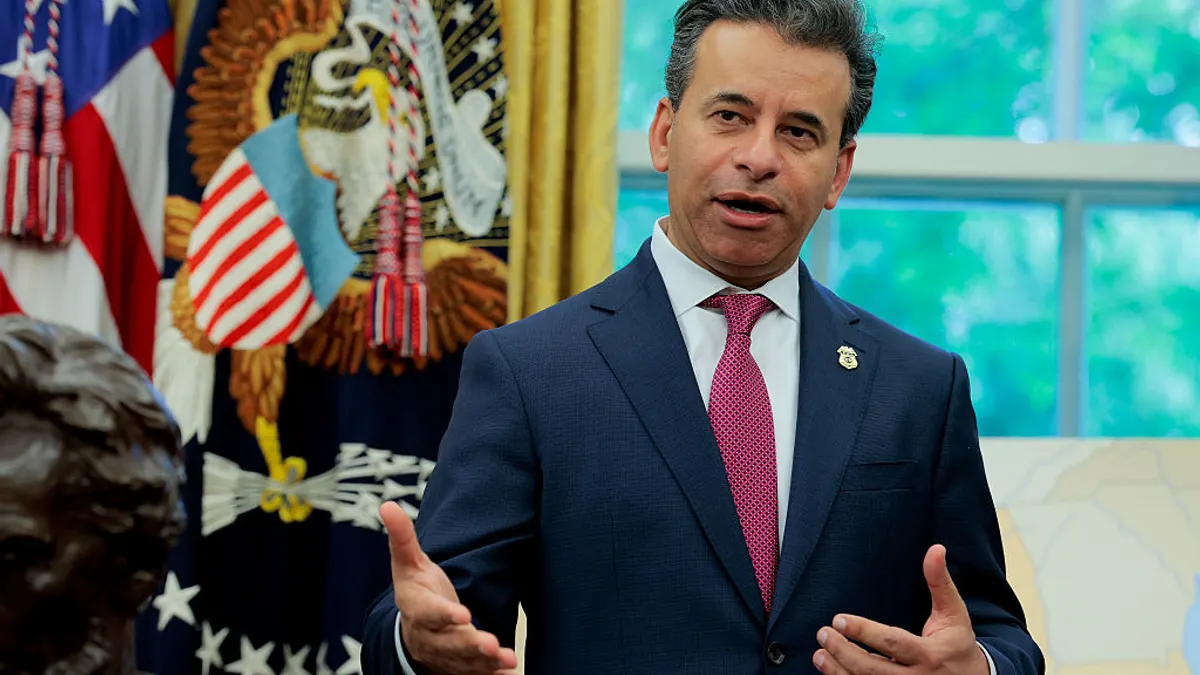The FDA is due for “revolutionary” changes with how it regulates and leverages AI, according to the agency's commissioner, Dr. Robert Califf. Yet, as it looks to address its desire to do more with the technology, the agency is also grappling with a planned reorganization, a budget crisis and persistent challenges like drug shortages.
As the FDA weathers these storms with the aim to come out stronger, modernized and more reactive, its role with AI in pharma is still being defined. And because there’s growing proof AI modeling could alleviate drug shortages, it could also be a valuable tool for the FDA itself.
The pharma industry has been awaiting guidance on how the FDA will regulate AI even as it ramps up investment in AI tools for R&D. The federal agency is currently working on developing standards for the complex AI use cases in pharma that will provide guidance on the regulatory framework. Recent comments from Califf hint at how the regulatory role may shake out — and how the agency could leverage AI to advance its own capabilities.
Drawing the regulatory line
Pharma companies are already leveraging AI in drug discovery, and machine learning algorithms are currently being used to assess observational study and clinical trial data. Leveraging the technologies could bring safe and effective drugs to patients faster, improve health equity through broader access, enhance drug safety, increase manufacturing quality and more, the FDA said in its 2023 discussion paper about AI and drug manufacturing.
“It is not just AI; it is quantum computing now on the horizon.”

Dr. Robert Califf
Commissioner, FDA
The agency is taking a risk-based approach to AI in drug development, hearing from stakeholders, and evaluating and managing the use of AI in the interest of public health, which has left pharma on hold for guidance, Califf explained during a webinar hosted by the Alliance for a Stronger FDA.
“The development of the standards, like a lot of what the FDA does, should be a community activity, which gets a lot of input from all sectors, including patients,” he said. “But then the final writing it down and putting it in a rule or guidance is something the FDA should do. Then enacting it and keeping track of it would probably go back into consortia of some kind, because it is just too big and widespread for the FDA to do it all on its own.”
But as the FDA considers how it will regulate AI, there’s already a clear separation of roles, according to Califf.
“I think a naive person may say, well, the FDA should be in there helping to regulate how people use AI to figure out what a target choice is — that is not our job,” Califf said. “Our job is to deal with what people bring forward to try to bring into development.”
FDA’s use of AI
Since returning at the helm of the FDA in 2022, Califf has been eager to fix the drug shortage crisis and the efforts could benefit from AI.
“[If] you think about the supply chain issues we are dealing with, there is so much progress that could be made with digital supply chains available to model what is going to happen,” Califf said. “I see this as transformative for the internal operations of the FDA.”
For the FDA to move forward with the technology in a meaningful way, investments are needed — and making upgrades can be a hard sell for an agency currently under budget pressures.
The FDA has asked for a 10% boost, totaling $7.2 billion, as part of the president’s fiscal year 2024 budget. So far, Congress hasn’t agreed on a long-term budget, and kicked the can down further down the road after passing a short-term spending bill in January to keep the government funded through March. The FDA is currently funded thanks to the stopgate measures that kept spending levels the same.
For the agency charged with protecting public health, new upgrades to leverage the full potential of AI is a hard sell in the current budget climate.
“It is very hard to get Congress to give capital to make the changes that I think would be revolutionary,” Califf said. “So that is something for us to work on, is how to make that case. But it is not just AI; it is quantum computing now on the horizon.”
It’s not just the FDA’s potential use of AI being affected by budgeting — its regulatory role and oversight of the technology is also part of the equation.
The FDA already separates its role in regulating AI when it comes to medical devices, but predictive AI, which continues to accrue data and change over time, is more complex, Califf explained. And even without the agency’s ongoing budget woes, staffing for this heightened oversight isn’t likely to happen.
“There is a line of where FDA regulates or not,” Califf said. “That has been defined by Congress. FDA does not regulate the administrative functions, but when it involves patient safety, or there is significant risk, FDA is involved. But we would have to hire three or four times as many people to take on what is coming on.”





















